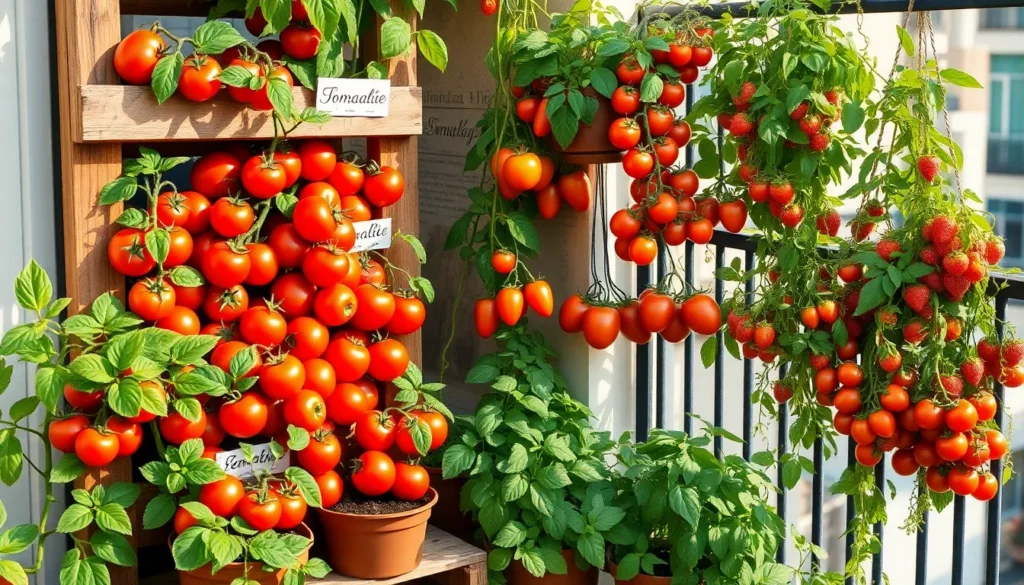Whether you’re a seasoned gardener with a love for homegrown flavors or a beginner looking to transform a cozy balcony into a lush, edible paradise, growing tomatoes in small spaces is a delightful endeavor. This guide is here to inspire and equip you with the knowledge to cultivate juicy, vibrant tomatoes, even if you’re limited by square footage.
Tomatoes are a versatile and rewarding plant to grow, offering not just the promise of delicious harvests but also the joy of nurturing life in compact urban environments. You’ll discover practical techniques to maximize your space, from choosing the right varieties to utilizing innovative growing methods like vertical gardening and container planting.
By the end of this article, you’ll be armed with tips and tricks to overcome common challenges and optimize your small space for tomato success. Whether you’re working with a windowsill, a tiny patio, or a small plot, you’ll learn how to create an inviting and productive oasis that bursts with the taste of summer.
Select Compact Tomato Varieties
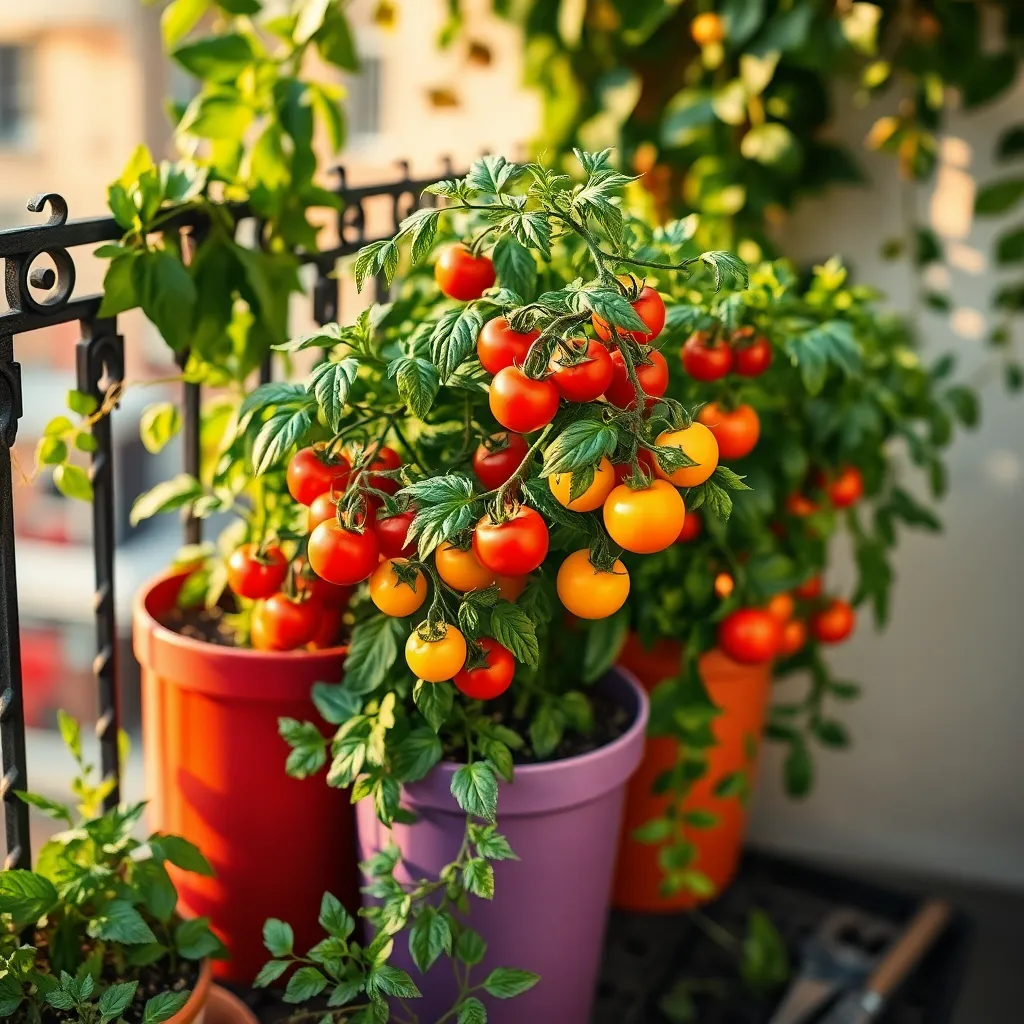
Choosing the right tomato variety is crucial for small-space gardening success. Compact tomato varieties are perfect for patios, balconies, or small garden beds as they require less space and maintenance.
One popular choice for small spaces is the ‘Tiny Tim’ variety. This dwarf plant grows to about 12-18 inches tall and produces a generous amount of cherry-sized tomatoes.
Another excellent option is the ‘Patio Princess’, which is specifically bred for container gardening. Its bushy habit and ability to thrive in a pot make it a favorite among urban gardeners.
To ensure healthy growth, plant these compact varieties in a well-draining potting mix rich in organic matter. Regular watering is essential, but be cautious not to overwater; aim for a schedule where the soil remains consistently moist but not soggy.
Place your tomato plants in an area where they receive at least six to eight hours of sunlight daily. If natural light is limited, consider using grow lights to supplement their light needs, especially during the shorter days of late autumn and early spring.
For more experienced gardeners, try experimenting with companion planting to maximize space and improve soil health. Consider planting basil or marigolds alongside your tomatoes to repel pests and enhance flavor.
Use Space-Saving Containers
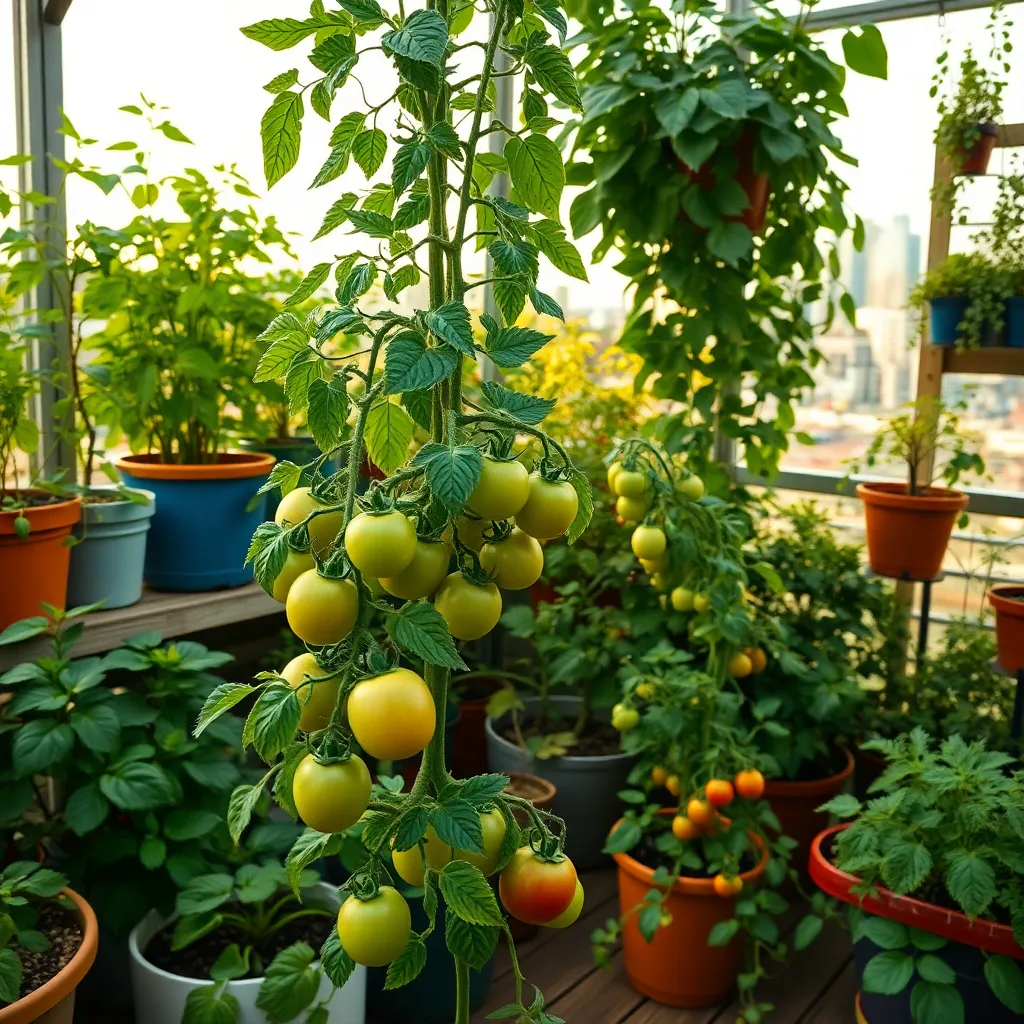
When growing tomatoes in small spaces, using space-saving containers can be a game-changer. Opt for containers that are at least 12 inches deep to support the root system of compact tomato varieties.
Consider using fabric pots or self-watering containers, which provide excellent drainage and consistent moisture. Fabric pots promote healthy root growth by allowing air to circulate through the soil, preventing root rot.
Maximize vertical space by incorporating hanging baskets or stacking pots. This not only saves ground space but also ensures your plants receive ample sunlight, which is crucial for healthy tomato growth.
For advanced gardeners, experimenting with hydroponic setups can be an exciting way to grow tomatoes in limited space. In these systems, plants grow in nutrient-rich water without soil, saving space and enhancing growth rates when done correctly.
Ensure Optimal Sunlight Exposure
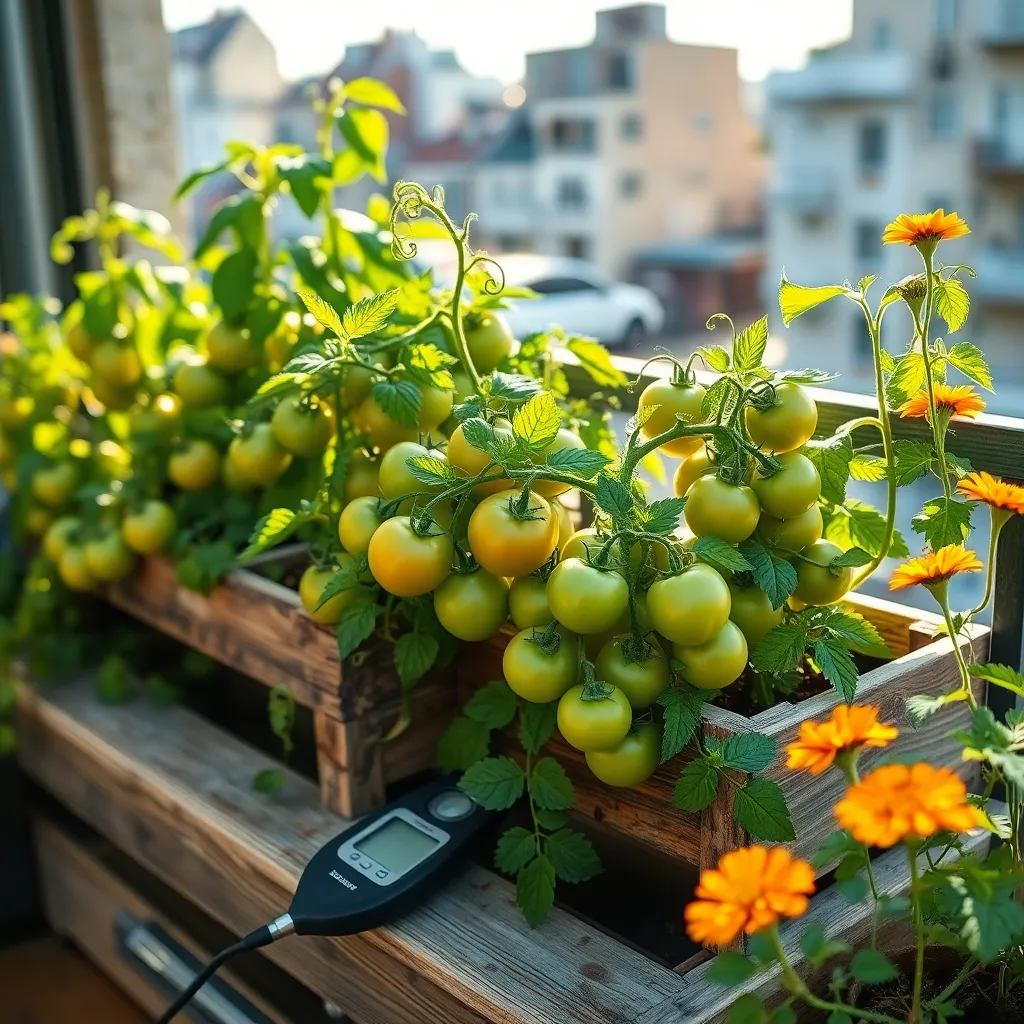
When growing tomatoes in small spaces, ensuring they receive optimal sunlight is crucial for healthy growth and abundant fruiting. Tomatoes thrive in full sun, requiring at least 6 to 8 hours of direct sunlight daily, so it’s essential to choose a location that maximizes exposure.
Consider the orientation of your balcony or patio to determine the best spot for your tomato plants. South-facing areas typically offer the most consistent sunlight throughout the day, making them ideal for tomato growth.
For those with limited sunlight, using reflective surfaces can help increase light exposure. Placing reflective materials like white walls or aluminum foil behind your plants can bounce additional light onto them, enhancing their growth potential.
To further optimize sunlight exposure, periodically rotate your containers. This ensures all sides of the plant receive equal sunlight, promoting even growth and preventing legginess.
Implement Efficient Watering Techniques
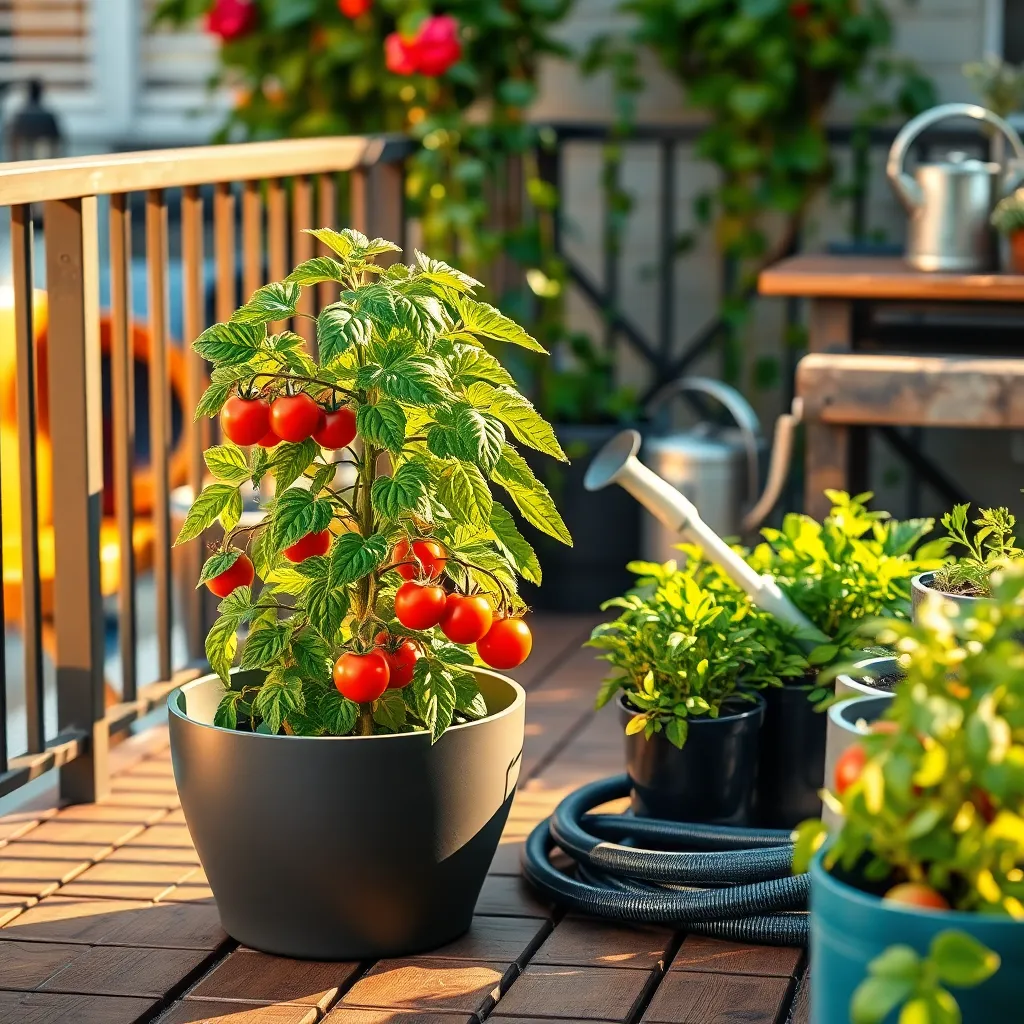
When growing tomatoes in small spaces, efficient watering techniques are crucial to ensure optimal plant health. Tomatoes require consistent moisture levels, but overwatering can lead to root rot, especially in confined environments.
Use a watering can with a narrow spout to target the base of the plant, minimizing water wastage. Drip irrigation systems can be an excellent investment for small spaces, providing consistent moisture without saturating the soil.
For beginners, it’s important to water deeply but infrequently to encourage strong root development. Check the soil’s moisture level by inserting your finger about an inch deep; if it feels dry, it’s time to water.
Advanced gardeners might consider using self-watering pots, which can help maintain moisture levels in small spaces. These containers often feature a reservoir that allows the plants to absorb water as needed, reducing the risk of overwatering.
Support with Vertical Structures
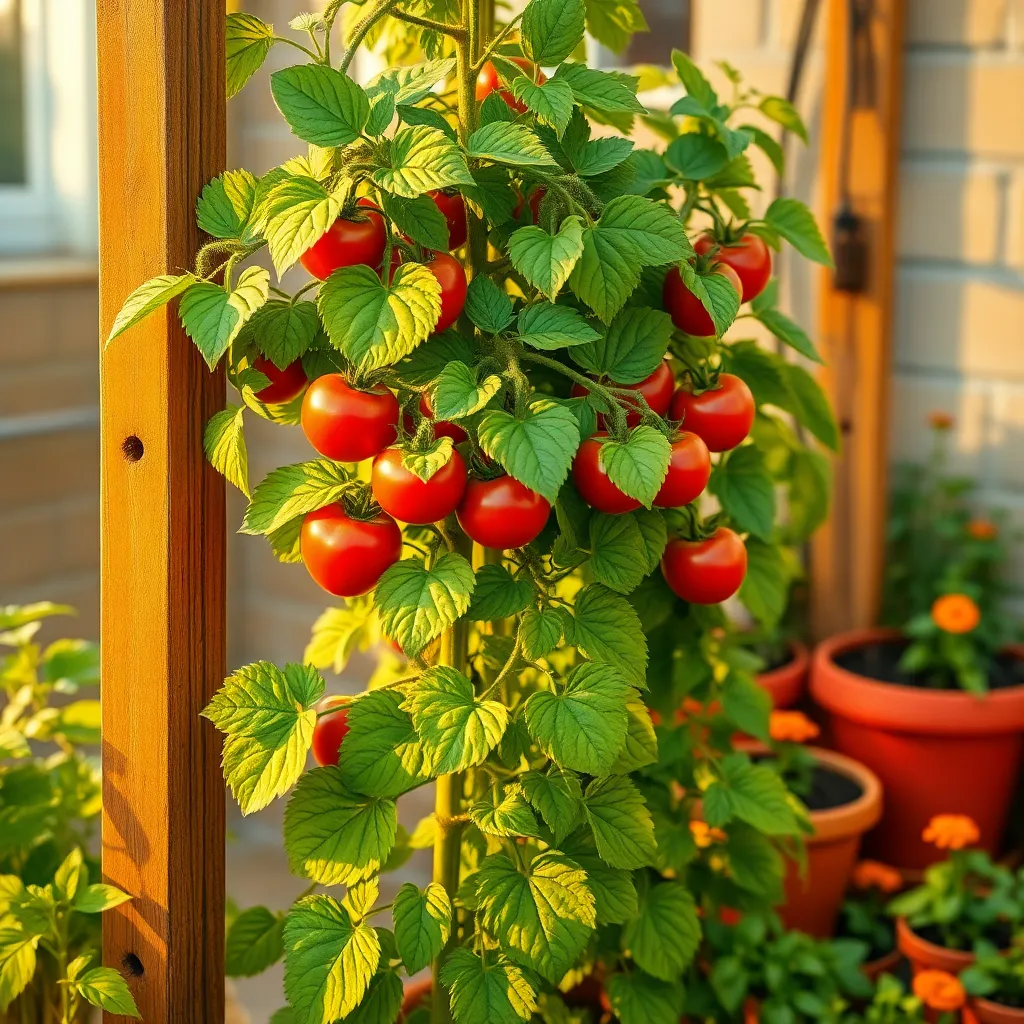
To maximize your small space when growing tomatoes, consider using vertical structures. Vertical structures like trellises and stakes help keep plants upright, ensuring better air circulation and sunlight exposure.
Begin by choosing a suitable vertical support system for your tomato variety. Determinate varieties do well with cages, while indeterminate types benefit from taller stakes or trellises.
Secure your tomato plants to these supports using soft ties or garden clips. Avoid damaging the stems by ensuring the ties are snug but not too tight, allowing for growth.
Regularly check the supports as your plants grow taller and heavier with fruit. This maintenance ensures the structures remain stable and continue to support the plants effectively.
Conclusion: Growing Success with These Plants
As we’ve explored in “How to Grow Tomatoes in Small Spaces,” nurturing a relationship is akin to cultivating a thriving garden, even in the smallest of spaces. First, we discussed the importance of understanding your partner’s needs, much like recognizing the right conditions for your plants. Next, we delved into effective communication, akin to providing the right amount of water and sunlight. We also highlighted the importance of setting boundaries, similar to providing supportive structures for your tomatoes. The fourth concept focused on patience and timing, reminding us that relationships, like gardens, grow at their own pace. Lastly, we emphasized the significance of continual care and appreciation, ensuring your relationship, like your garden, flourishes over time.
As a practical next step, take a moment today to actively listen to your partner—truly hear their thoughts and feelings, fostering a deeper connection. Remember to save or bookmark this article for easy reference, ensuring you have these nurturing strategies at your fingertips. By applying these concepts, you will be better equipped to cultivate a successful and fulfilling relationship, one that grows stronger with each passing day. Let this be the beginning of your journey toward a vibrant and enduring partnership.

